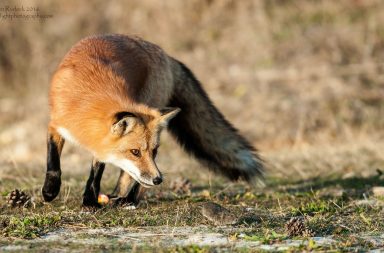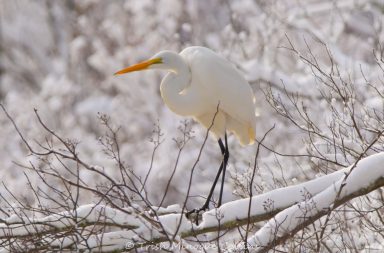GREEN HERON
A fun bird, the Green Heron is also a summer nesting bird on LI. A rather secretive bird, it may flick its tail nervously, as well as raise and lower its crest when startled or excited. It’s a small chunky wading bird and is widespread throughout North America, inhabiting wet areas, marshes, brushy freshwater or marine wetlands. A dark bird, it can be distinguished by a glossy greenish (even blue in some light) back with dark chestnut coloring on the neck and both sides of the head. It has a dark black pointed bill and orange legs in breeding plumage (in non breeding plumage the legs are more yellow). Young birds have brown streaking on their necks.
During the spring migration the birds migrate at night from coastal areas in Florida, Texas and Central America. Green herons in flight look like “tailless crows” with slow wing beats. Fall migration is usually over by early October where the birds are then on their wintering grounds on the Florida gulf coast, as well as other Southern coastal areas and Central America.
It is believed pair bonding goes on during migration as both sexes arrive on the breeding territory at about the same time. Upon arrival the males begin to set up breeding territory by sitting on a “song-post” perch and emitting a low-pitched ‘skow.” Courtship involves wing flapping, puffing up the head crest and neck feathers, bill snapping, swaying and bobbing. Nests are a basket of sticks and twigs about 10-20 feet high in a shrub or small tree, frequently over water. On rare occasions, nests can be found on the ground in cattails or reeds. Two to six eggs are laid with incubation by both the male & female for about three weeks. Feeding is also done by both sexes by regurgitating food into the baby birds beaks. The babies fledge in about three weeks and approximately one month later they are mostly independent.
Diet is mostly minnow-sized fish, but they also consume dragonflies, crayfish, spiders, earthworms, leeches and snails, as well as frogs, snakes, and mice. And Green herons have a very interesting way of hunting for fish. They will find a perch over the water where they will place a twig, leaf, feather or insect on top of the water. They will then wait until a minnow comes to the water’s surface to investigate, at which point the heron elongates its neck to strike and catch the fish. If the first placement does not draw any prey the bird will pick up the “bait” and move it to another position and again wait patiently for results. Other birds that use tools like this are blue and green jays, brown headed nuthatches, and ravens. If you’re interested in seeing the green herons’ use of a tools while hunting check out the video below.
The Green Heron is one of several species; together the collective group is called “green-backed” herons which also includes the Striated Heron and the Galapagos Heron. Other names that have been used for this bird are “little green” and “green bittern.”
Human activities have had their effect on Green Herons as they were sometimes hunted for food. But the most damage done to their population numbers is caused by fish hatcheries that kill Green Herons to prevent them eating their young fish. However, their populations are fairly stable now, and are believed to be expanding their range northward in parts of the northwest.
Green Herons are here on Long Island during the summer, nesting and feeding their young. So if you come upon a marshy areas check it out, (quietly of course so as not to disturb the birds) and look to see if there is a Green Heron perched over the water waiting to strike.
The images below were all submitted by members of the Long Island Wildlife Photography Group on Facebook.

Dianne Harrier

Vicki Jauron

Brian Doherty

Cindy Goldman

Jimmy Johnny

Lelah Cafuoco
More images on pages 2, 3, 4, and 5



